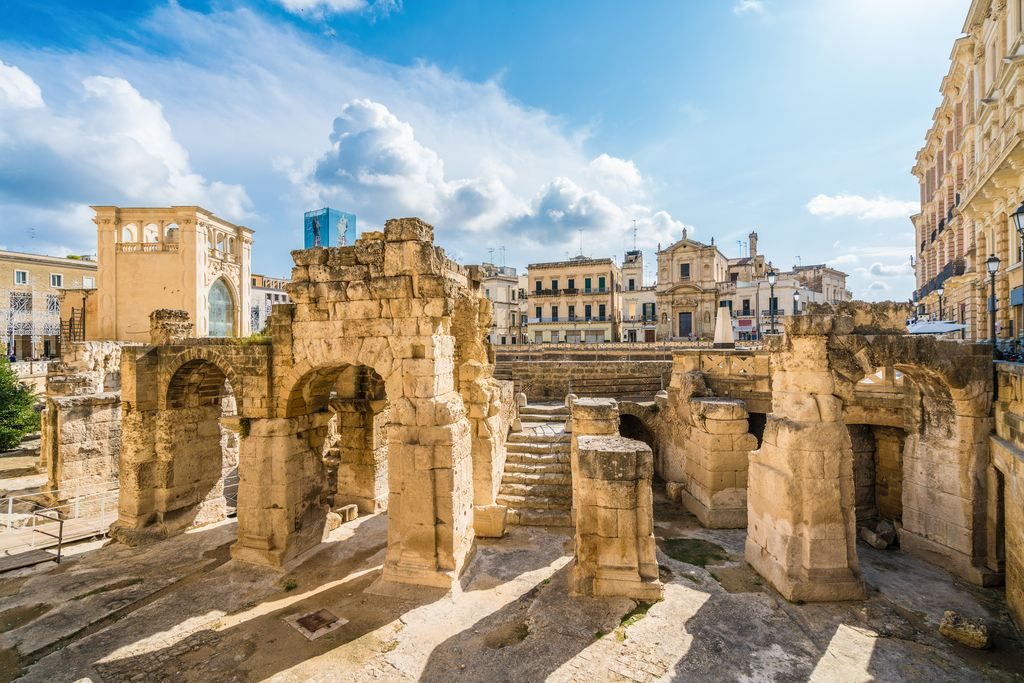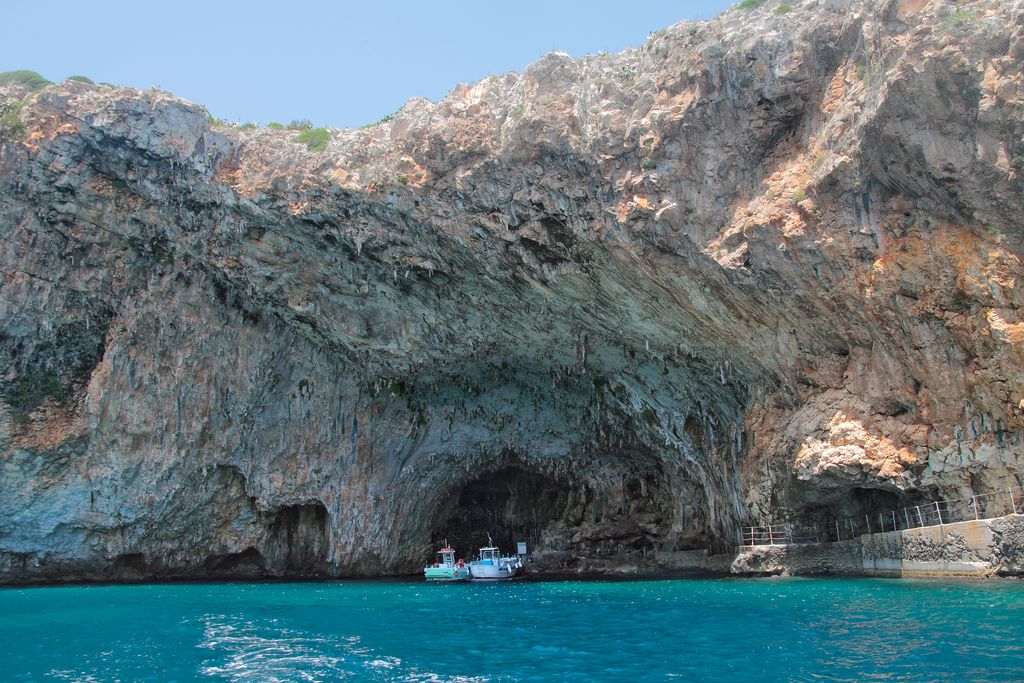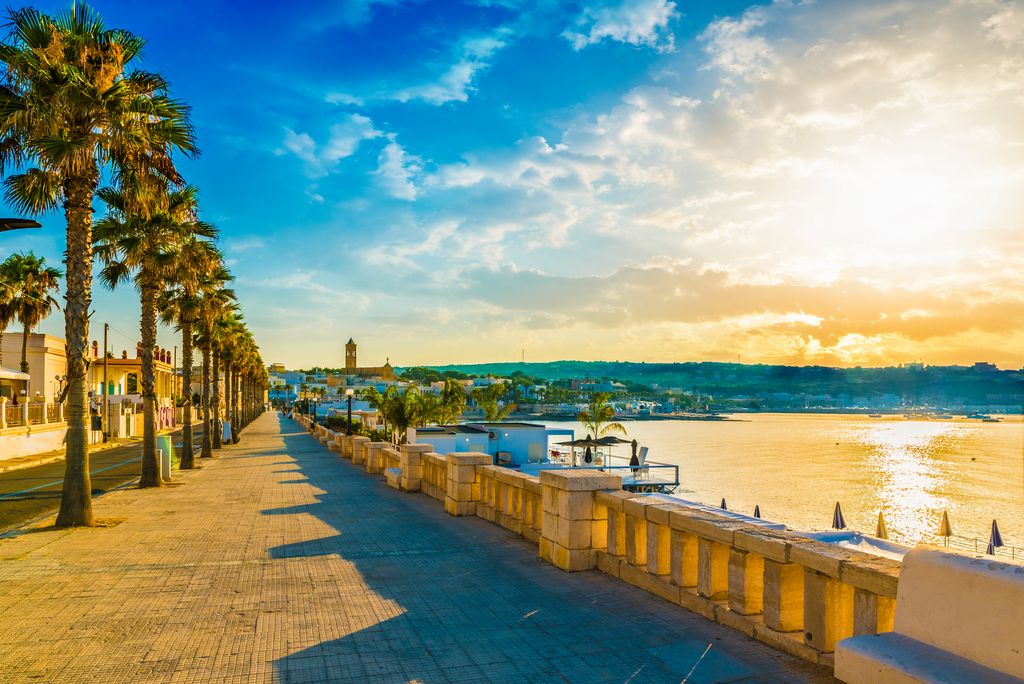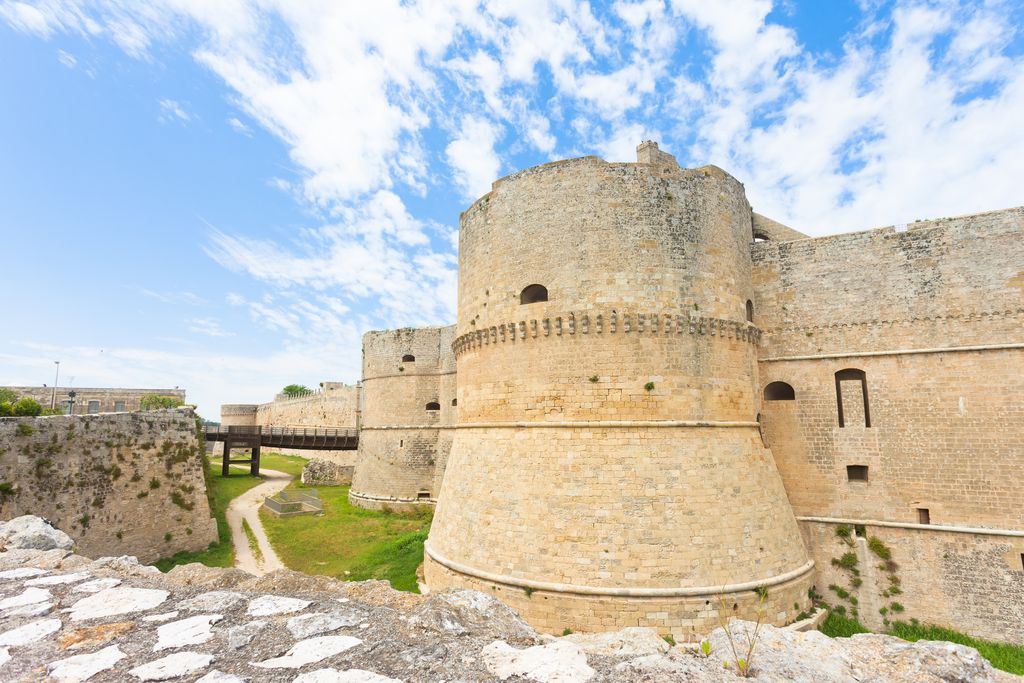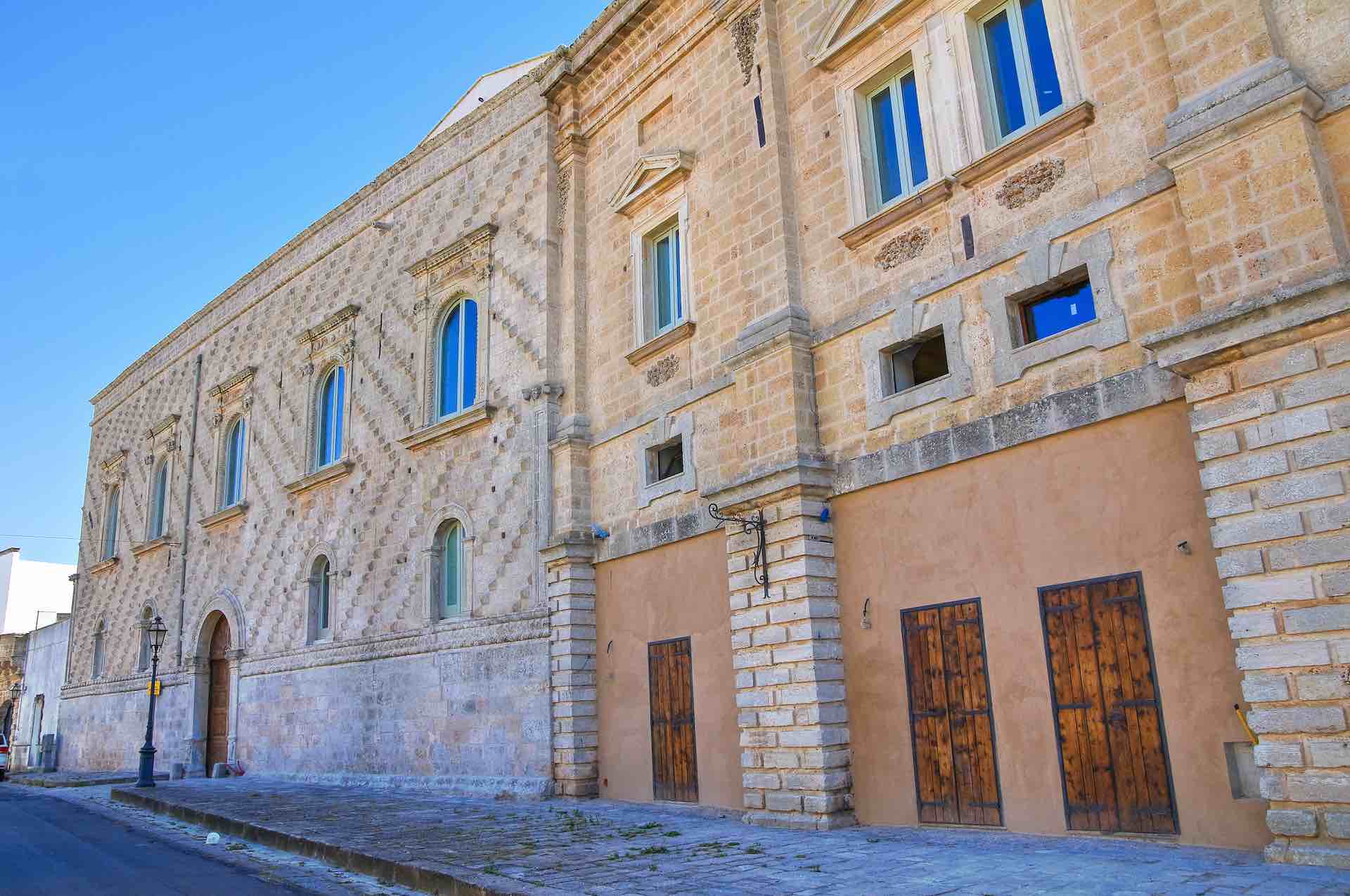The Pearl of Baroque
Lecce is known all over the world for being one of the most beautiful Italian cities, thanks to its historical, artistic and cultural heritage. The Baroque, in addition to the wise use of the pietra leccese (a typical local stone) has shaped almost every building of this town in Salento, which is a true jewel that deserves to be discovered.
The main square of Lecce
Crossing Porta Napoli, you enter Lecce old town, a small ancient world where noble palaces, churches and craft workshops, where the ancient art of papier mache is still preserved, alternate.
Piazza Sant’Oronzo is the beating heart of the city; on its pave, indeed, its crest is represented, that is a she-wolf in the shadow of a holm oak surmounted by a crown with five towers. The presence of a she-wolf is a clear referral to the ancient Rome, that between the I and the II centuries AD made Lecce one of its municipia. Precisely in the square there is the most monumental memory of the ancient Lupiae (as Lecce was known during the Roman age), the splendid Roman Amphitheatre, part of whose bleachers and columns of tuff are still visible: only a third of this work has been discovered, but the visual effect is really stunning.
Those who would like to admire the statue of Athena, that was found here, and the remains of the marble parapet decorated with scenes of hunting and gladiator fights can visit the Museum Castromediano, among the most ancient ones in the region.
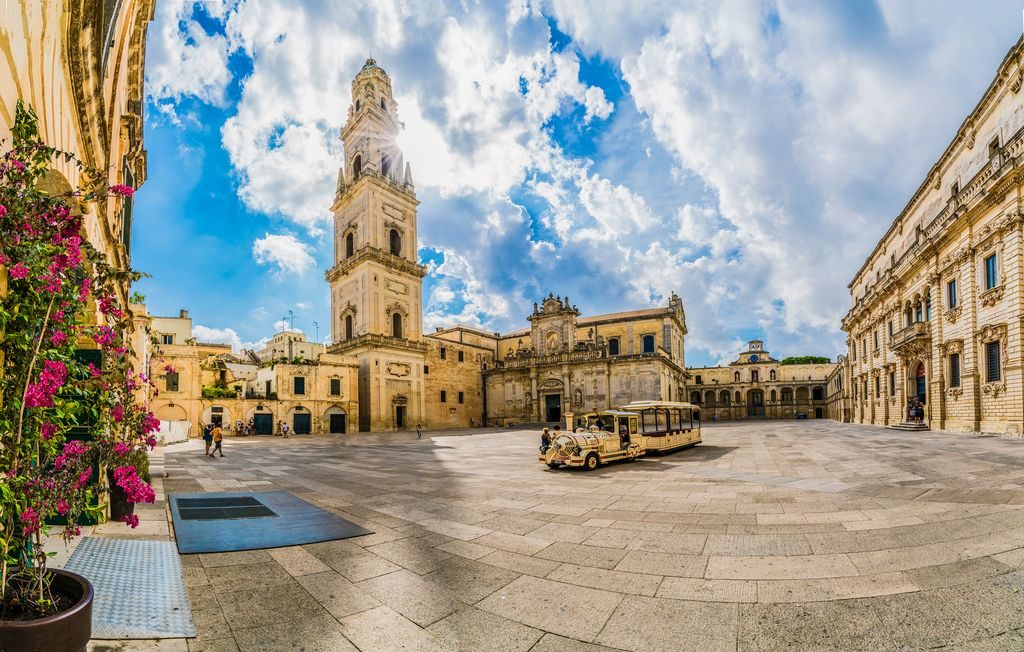
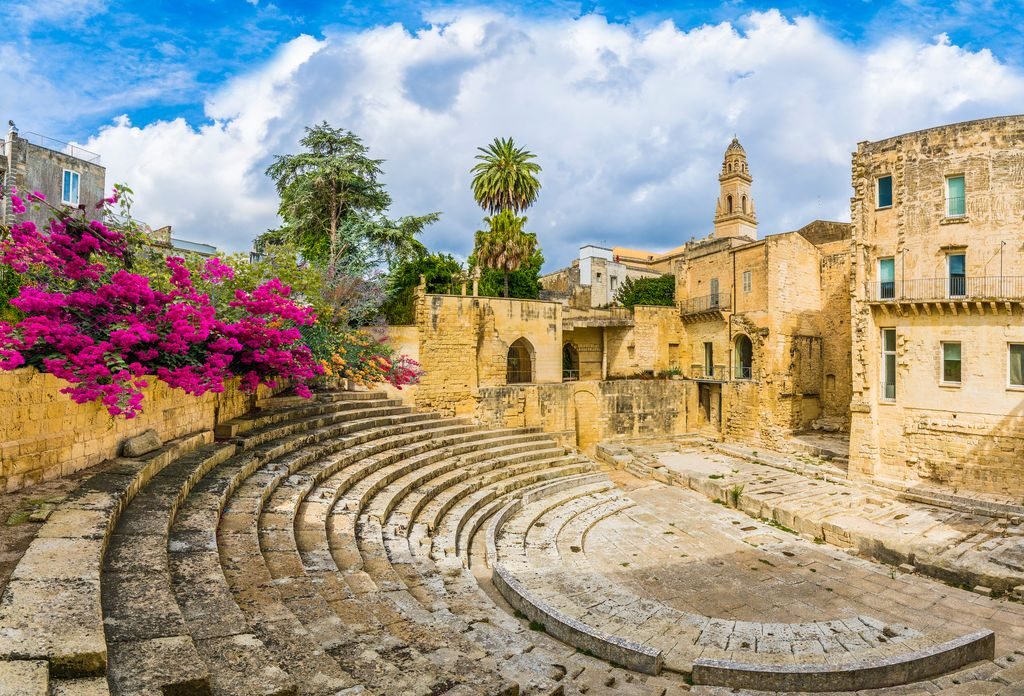
The Roman Amphitheatre, whose smaller but equally suggestive “twin” is in Via Arte della Cartapesta, is in the shadow of the votive column with the statue of Sant’Oronzo, the Patron Saint, on the top. A few steps away, moreover, there is the XVI century Palazzo del Seggio, of which an elegant loggia with pointed arcades remains.
The triumph of Baroque
The other square considered a symbol of Lecce is Piazza Duomo, which shows itself to the visitor walking along Via Vittorio Emanuele II, as a stage of a theatre: the square, indeed, is closed on three sides and was the religious centre of the city for long time.
The belfry, projected by Zimbalo, is surmounted by an octagonal dome which gives a view even of the Albanian mountains. Below, there is the Cathedral of SS. Maria Assunta with its two entrances: the main one in front of the XVIII century Episcopal Palace and the secondary entrance, in its luxurious baroque style, that, instead, faces the entrance of the square. Inside the church, among marble floors and golden wooden ceilings, the beautiful major altar of the Neapolitan School, made of bronze and marble, stands out.
Walking throughout Lecce old town, many religious buildings will catch your attention, from the Church of Sant’Irene to that of San Matteo, with its characteristic curvilinear façade. But the most charming one is the Basilica of Santa Croce, maximum example of Lecce Baroque and located close to the former Convent of the Celestines.
The façade is a triumph of friezes and statues which reveals a mix between Baroque and Renaissance styles: zoomorphic capitals, an entablature decorated with female and lion figures and the Romanic rose window surrounded by the statues of the saints Benedetto and Celestino.
